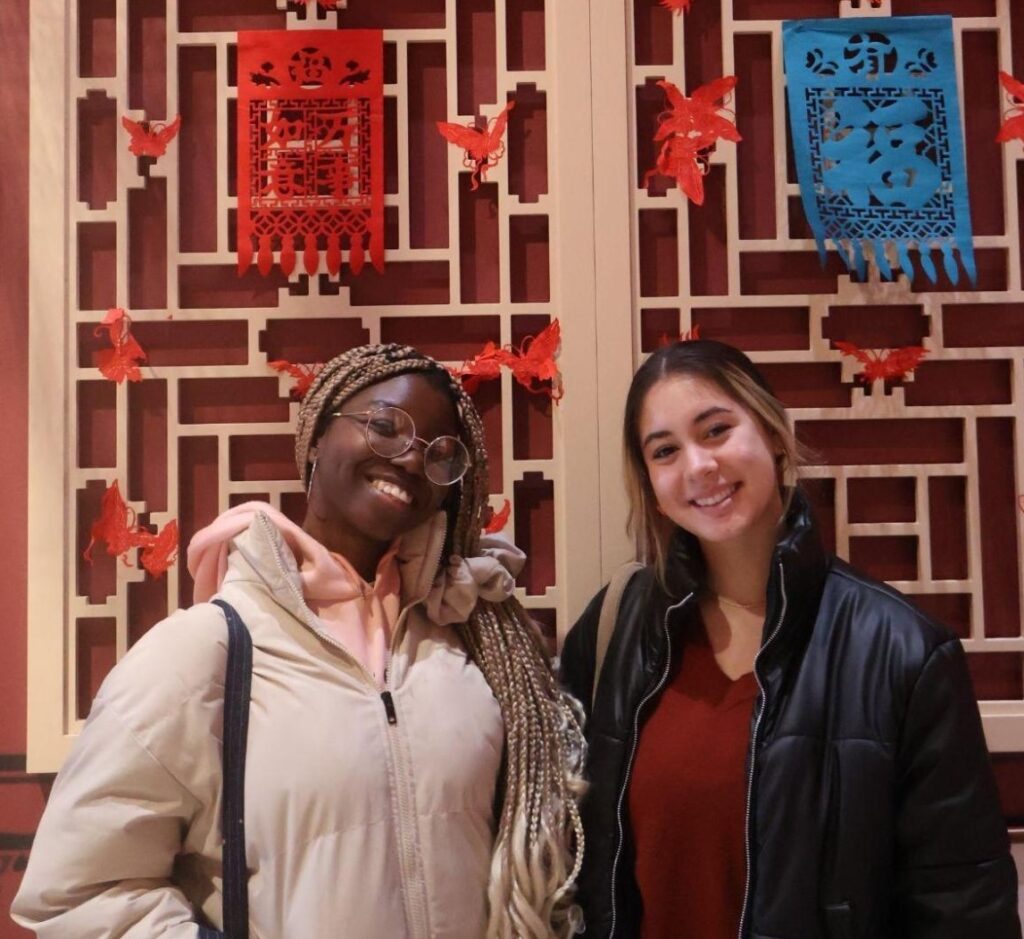Anyone who has ever watched the Disney Channel original movie High School Musical (2006) will know that teenagers tend to “stick to the status quo” when it comes to choosing friends. This tendency to gravitate towards others who are similar is not entirely fiction, and it doesn’t stop at hobbies. In real life, this phenomenon is most often seen when minorities group themselves together for the sake of safety and familiarity with their peers. Think of neighborhoods such as Chinatown in New York City or Little Havana in Miami. Over time, those with the same culture settled together in the midst of a place far from home. This Old School Catalyst reporter experienced the phenomenon firsthand while traveling to China—and did her best to navigate the space in a culturally conscious manner.
It had been a difficult fight to even be allowed to participate in a study abroad experience in China because of Florida’s 2023 legislation, SB 846. This state law “prohibits state universities and state colleges from accepting grants from or participating in partnerships or agreements with a college or university based in a foreign country of concern,” including study abroad programs.
As a New College student majoring in Chinese Language & Culture, I was eager to participate in the Consortium for Educational Travel Academic Programs (CET). The first half of my fall 2024 semester was spent going back and forth with my school’s Study Abroad office, the Provost and General Counsel, pleading my case as to why I should be allowed to go on this trip and receive academic credit. Ultimately, I was not able to get credit for my participation, though I was granted permission to attend after over a month of deliberation.
After this struggle, I was doubly ecstatic to finally touch down in the country on December 28, 2024. I was there for about four weeks during the 2025 Independent Study Project (ISP) period. The first few days went by in a blur of introductions and icebreakers, but I eventually got comfortable. That’s when I began to notice the looks.
Most Chinese locals tried to maintain some semblance of stealth as their eyes lingered on me for longer than usual or did a double take as I passed. A lot asked for pictures, while others forewent asking and took it upon themselves to become my personal paparazzi. But I didn’t feel like a celebrity. I felt extremely out of place.
While visiting a historic street known as a hutong on a class trip, two security guards singled me out for a picture, insisting it be taken on their own phones. Chefs and servers repeatedly passed my table at a restaurant, whispering to each other but quickly scurrying away if I offered a wave. In my host university’s dining hall, a janitor waited for me to be two feet away before pointing his camera and withdrawing, never speaking a word the entire time.
But is this not what I wanted? To be unapologetically Black in Beijing, 22 inches of platinum blonde braids swinging behind me as I walked the busy streets? And I shouldn’t have been surprised. Over 90% of China’s population is Han Chinese, and even in the capital city, I was hard-pressed to find another dark-skinned person unless it was at a popular tourist destination such as the Great Wall.
Though it was expected that I would be in the minority in this new place, I thought I would find community among the other American students attending the program with me. As the days continued on, I observed an intriguing trend within our group.
Our cohort of 21 consisted entirely of American students, mostly from private liberal arts colleges on the East Coast. About half of them were white. Aside from myself, the other half were from a few Asian countries, mostly China. I wouldn’t typically take note of these things, except that it seemed these two groups did not associate with each other at all outside of scheduled classroom hours.
I wasn’t the only one who realized this. I consulted my friends, and they admitted to seeing this divide much earlier than I did. I sat down with a second-year student from Wofford College in South Carolina, Joan Barnes, who also attended the month-long program with me.

“My mom is Chinese. My dad is just white. So I’m 50-50,” Barnes explained. “When people ask me, I just say half Asian because they can look at me and they can say, ‘Okay, you’re white and something.’ But they don’t know what.”
We could relate to each others’ experiences of stares from passersby as they tried to figure you out and put you into a box. In my case, it was pretty easy to tell that I wasn’t from the country. I could only imagine what locals thought when they saw her. Probably something along the lines of, ”Is she one of us?”
I thought back to our celebration on American New Year’s Day (Jan. 1) then to Barnes’ birthday that followed shortly after. Other than required orientation and program-led initiatives, those were the only two times the entire group mixed together. I asked Barnes about the split between the American students in our program.
“It seemed like almost immediately that happened,” Barnes said. “It was my birthday and then after was whenever it happened. Because we were all together and then after that…I don’t know. Which, I feel like even in America, that’s still definitely true. So it’s really funny that even here, it still happens.”
Like New College, Wofford College is a predominantly white institution (PWI). Both at school and in China, Barnes described a similar experience of people dividing into cliques. “The minority groups in my school, they all hang out with each other,” Barnes said. “And then it’s like the athletes that hang out with each other, and then everyone else [is in] sorority [or] frats.”
Her words reminded me of my own school. The introduction of an athletic program in 2023 caused a major influx of new students into the population. It was easy to see the chasm between the newer and older groups, separated in places such as the cafeteria and in dorms. The tension was palpable.
With regard to my trip, I had mentally prepared myself as much as one can for the reality of being “the only” Black person in my group for a prolonged period of time. This additional experience of factions forming within the study abroad group didn’t so much taint my experience as just put it in perspective.
Issues concerning race are intricate and deeply nuanced, so one person’s experience certainly won’t be the standard for all. While some of my time in China was uncomfortable, some of my fondest memories include Chinese people pulling me aside to tell me in their limited English how much they adored my hair or skin color.
This journey has helped me realize that living in an increasingly interconnected world, one cannot leave intercultural understanding to anthropologists or politicians. It is now the job of every individual to be open-minded to appreciating one another’s diverse cultures. With this mindset, we can move towards bridging nations and truly creating a global community.




